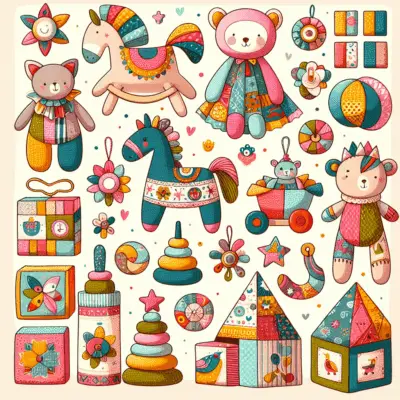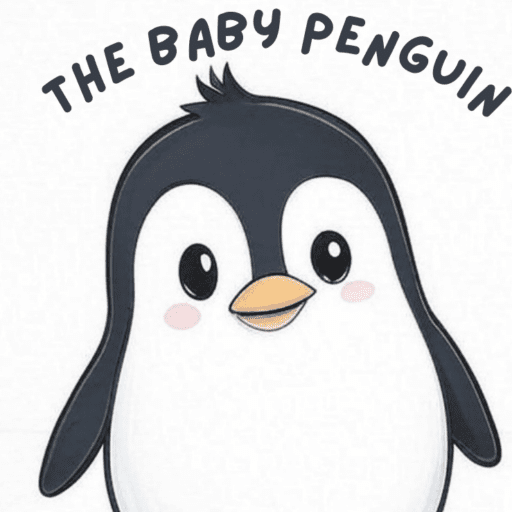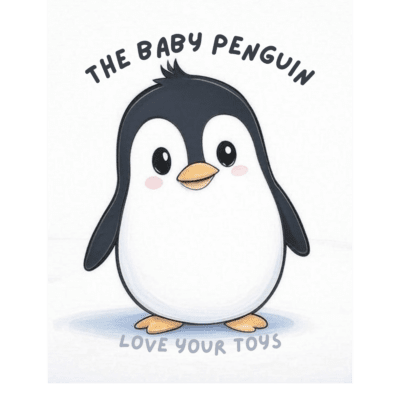Table of Contents
ToggleThe Rise of Sustainable Fabric Toys: How Global Brands Are Embracing Eco-Friendly Play Options
Discover how sustainable fabric toys are transforming the global toy market with eco-friendly materials and ethical manufacturing. Learn why conscious parents are making the switch! #SustainablePlay
As a mom of three energetic little ones, I’ve watched our playroom transform over the years. What started as a colorful explosion of plastic has gradually evolved into a thoughtfully curated space filled with sustainable fabric toys that I feel good about bringing into our home. This shift in my purchasing habits isn’t just a personal choice – it reflects a significant global trend that’s reshaping the toy industry.
The global fabric toys market is experiencing unprecedented growth as major brands recognize the increasing demand for eco-friendly play options. Parents like you and me are becoming more conscious about the environmental impact of our purchases, especially when it comes to items our children interact with daily.
Why Sustainable Fabric Toys Are Capturing Hearts (and Market Share)
Remember my daughter Emma’s beloved plastic tea set? The one that eventually broke, with pieces destined for a landfill where they’d remain for hundreds of years? That moment of frustration became my turning point. I began researching sustainable fabric toys and discovered a world of beautiful, durable alternatives made from organic cotton, hemp, wool, and other natural materials.
The appeal of sustainable fabric toys goes beyond their environmental benefits. These playthings offer sensory-rich experiences that plastic simply can’t match. The varied textures, natural weight, and gentle colors engage children in different ways, stimulating their developing senses more holistically.
Major brands are noticing this shift in consumer preferences. Companies like Hasbro and Mattel have begun incorporating sustainable materials into their product lines, while specialized eco-friendly toy manufacturers are gaining significant market share. This competition is driving innovation in the sustainable fabric toys sector, resulting in more diverse and creative options for conscious consumers.
The Growing Demand for Sustainable Fabric Toys Worldwide
Market research indicates that the sustainable fabric toys segment is projected to grow at a compound annual growth rate of 12.5% through 2028. This impressive growth reflects changing consumer values and increasing awareness about environmental issues.
North America currently leads the sustainable fabric toys market, but Europe follows closely behind. The Asia-Pacific region is showing the fastest growth rate as middle-class expansion creates new opportunities for premium toy categories. This global surge demonstrates that sustainable play is not just a passing trend but a fundamental shift in how we think about children’s products.
I’ve noticed this change in my own social circles too. At Emma’s fifth birthday party last month, nearly every gift she received was a thoughtfully chosen sustainable fabric toy. From hand-knitted dolls to organic cotton play food, these gifts reflected a community of parents making conscious choices about the toys entering their children’s lives.
What Makes Fabric Toys Truly Sustainable?
Not all fabric toys can claim the “sustainable” label. True sustainable fabric toys consider the entire product lifecycle – from raw material sourcing to manufacturing processes to end-of-life options.
Key factors that determine the sustainability of fabric toys include:
- Materials: Organic cotton, hemp, wool, and other natural fibers grown without harmful pesticides or fertilizers
- Manufacturing: Ethical production methods that minimize waste, water usage, and energy consumption
- Durability: Well-made products designed to last and potentially be passed down to siblings or friends
- Non-toxic: Free from harmful chemicals, synthetic dyes, and other potentially dangerous substances
- End-of-life: Biodegradable or recyclable components that won’t contribute to landfill waste
I learned these distinctions the hard way after purchasing what I thought was an “eco-friendly” plush toy, only to discover it contained polyester filling that would never break down naturally. Now I know to look for GOTS certification (Global Organic Textile Standard) and other reputable eco-labels when shopping for sustainable fabric toys.
Major Brands Embracing the Sustainable Fabric Toys Movement
The landscape of toy manufacturing is changing as established brands recognize the potential of sustainable fabric toys. Companies that have traditionally relied on plastic are diversifying their offerings to include more environmentally conscious options.
LEGO, for instance, has introduced fabric playsets made from recycled materials. Hasbro has launched a sustainable fabric toys line featuring organic cotton plush characters from popular franchises. Even Disney has begun creating character merchandise using eco-friendly textiles.
Alongside these major players, specialized sustainable toy brands are thriving. Companies like Under the Nile, Maileg, and Hazel Village have built loyal customerbases by focusing exclusively on high-quality, ethically produced fabric toys. These smaller manufacturers often lead the way in innovation, pushing the boundaries of what’s possible in sustainable toy design.
The most exciting development I’ve seen as a mom is how these sustainable fabric toys maintain the play value and character appeal kids love while reducing environmental impact. My son’s organic cotton superhero doll gets just as much imaginative play time as any plastic action figure would – with the added benefit of being cuddle-friendly at bedtime!
How to Choose the Best Sustainable Fabric Toys for Your Children
With so many options now available, selecting the right sustainable fabric toys for your family can feel overwhelming. Here are some guidelines I’ve developed through my own journey:
- Verify certifications: Look for GOTS, OEKO-TEX, or Fair Trade labels that confirm environmental and ethical standards
- Consider age-appropriateness: Choose toys that will grow with your child or serve multiple developmental stages
- Evaluate play value: The best sustainable fabric toys encourage open-ended play and creativity
- Check durability: Examine stitching, materials, and construction to ensure the toy will withstand enthusiastic play
- Research the company: Support brands with transparent supply chains and demonstrated commitment to sustainability
When I’m shopping for sustainable fabric toys, I also consider how they’ll complement our existing collection. Creating a cohesive playroom with toys that work together encourages deeper imaginative play experiences.
The Impact of Choosing Sustainable Fabric Toys
Every time we purchase a sustainable fabric toy instead of a plastic alternative, we’re voting with our dollars for a healthier planet. The collective impact of these individual choices is driving meaningful change in manufacturing practices across the toy industry.
Beyond environmental benefits, sustainable fabric toys offer significant advantages for children’s development. The natural textures and weight of fabric toys provide richer sensory experiences than plastic alternatives. Many parents, myself included, report that children engage in longer periods of focused play with well-designed fabric toys.
There’s also something deeply satisfying about watching your child form an attachment to a toy you know isn’t harming the environment. My youngest son’s organic cotton bunny has become his inseparable sleep companion, and I love knowing that this special toy aligns with our family’s values.
Creating a More Sustainable Play Future
The growing sustainable fabric toys market represents more than just a business opportunity for manufacturers – it’s a chance to reimagine how we approach children’s products. By prioritizing sustainability alongside play value, toy companies are helping raise a generation of children who understand that beautiful, engaging toys don’t have to come at the environment’s expense.
As parents, we can support this positive trend by making thoughtful choices about the toys we bring into our homes. By selecting sustainable fabric toys, we not only provide our children with high-quality play experiences but also demonstrate our commitment to protecting the world they’ll inherit.
The next time you’re shopping for a special toy, consider exploring the wonderful world of sustainable fabric options. Your child will delight in their new treasure, and you’ll enjoy the peace of mind that comes from making an environmentally conscious choice. It’s a small step that contributes to a much larger movement toward sustainability in all aspects of our lives.
Ready to explore sustainable fabric toys for your little ones? Browse our curated collection of ethically made, eco-friendly fabric toys designed to inspire imagination and support healthy development.
Frequently Asked Questions About Sustainable Fabric Toys
What makes fabric toys more sustainable than plastic toys?
Sustainable fabric toys are typically made from natural, renewable materials like organic cotton, wool, or hemp that biodegrade at the end of their life cycle. Unlike plastic toys, which can persist in landfills for hundreds of years and release microplastics, properly sourced fabric toys have a significantly lower environmental footprint. Additionally, sustainable fabric toy production generally uses fewer chemical processes and results in less pollution than conventional plastic toy manufacturing.
How do I clean and maintain sustainable fabric toys?
Most sustainable fabric toys can be spot cleaned with mild soap and water for small stains. Many are also machine washable on gentle cycles using eco-friendly detergent. Always check the manufacturer’s care instructions first, as some toys with specific fillings or attachments may require special care. To extend the life of fabric toys, store them in dry locations and repair small tears promptly rather than discarding them.
Are sustainable fabric toys worth the higher price point?
While sustainable fabric toys often cost more than mass-produced plastic alternatives, they typically offer greater durability, making them cost-effective over time. These toys are usually designed to last for years and can be passed down between siblings or generations. The additional benefits—including non-toxic materials, support for ethical manufacturing, reduced environmental impact, and often superior play value—make them a worthwhile investment for many families committed to conscious consumption.



